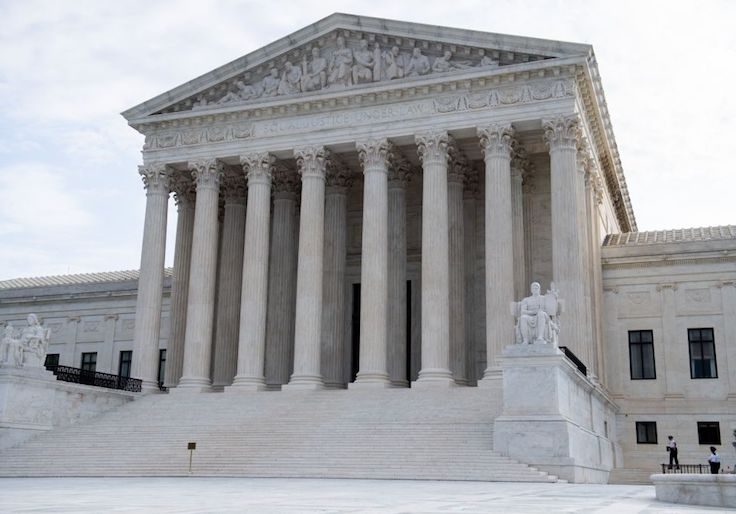The Supreme Court building will close to the public as of Thursday afternoon, given continued concerns over the spread of the Wuhan coronavirus.
Though access to much of the building is restricted, its public areas include spaces where law clerks, court police, and other employees interact with hundreds of visitors daily, including bathrooms, a cafeteria, and the courtroom itself.
"Out of concern for the health and safety of the public and Supreme Court employees, the Supreme Court Building will be closed to the public from 4:30 p.m. on March 12, 2020, until further notice," a statement on the Court's website reads. "The Building will remain open for official business."
The Court did not indicate whether it will proceed with its next argument session, called a sitting. The next sitting begins March 23 and runs until April 1. The Court is set to consider several high-profile cases during that period, including subpoenas for President Donald Trump's financial records and whether two Catholic schools can exercise an exemption from employment bias suits.
Older individuals with preexisting medical conditions are especially susceptible to serious coronavirus infections, according to the World Health Organization. Several members of the Court qualify as high-risk persons. Justice Ruth Bader Ginsburg, 86, has a coronary stent and is a four-time cancer survivor. Justices Stephen Breyer and Clarence Thomas are 81 and 71, respectively, though neither is known to have serious ailments.
Several of the Court's longstanding traditions afford opportunities for transmission of the virus. The justices shake hands with one another before taking the bench for argument and do so again when meeting in private conference.
Fix the Court, a nonpartisan judicial watchdog, said the Court should consider livestreaming arguments to ensure normal business continues without risk to the justices. While the Supreme Court's proceedings are open to the public, cameras are not permitted and audio recordings are not released until the Friday following a particular argument.
"Given the crowds that often gather in and around the Supreme Court, not to mention the advanced age of several of the justices, it's the right call to close the building to the public until further notice," executive director Gabe Roth said. "That said, if this state of affairs continues through March 23, the next time the justices hear arguments, the Court should at a minimum permit the public to listen to a livestream of argument audio from its website."
"Live audio is the smartest way to balance the now-competing concerns of public safety and public access," Roth added.
The Court has canceled sittings before. The justices recessed for one month in 1918 during the Spanish flu pandemic. The move is a dramatic one, however. The justices generally sit from October to late June, followed by a summer hiatus. Suspension of public proceedings would necessarily extend the Court's business deep into July.
Cold War-era contingency measures provided that the Supreme Court would relocate to the Grove Park Inn in Asheville, N.C., in the event of a national emergency. Contemporary security plans are unknown.
